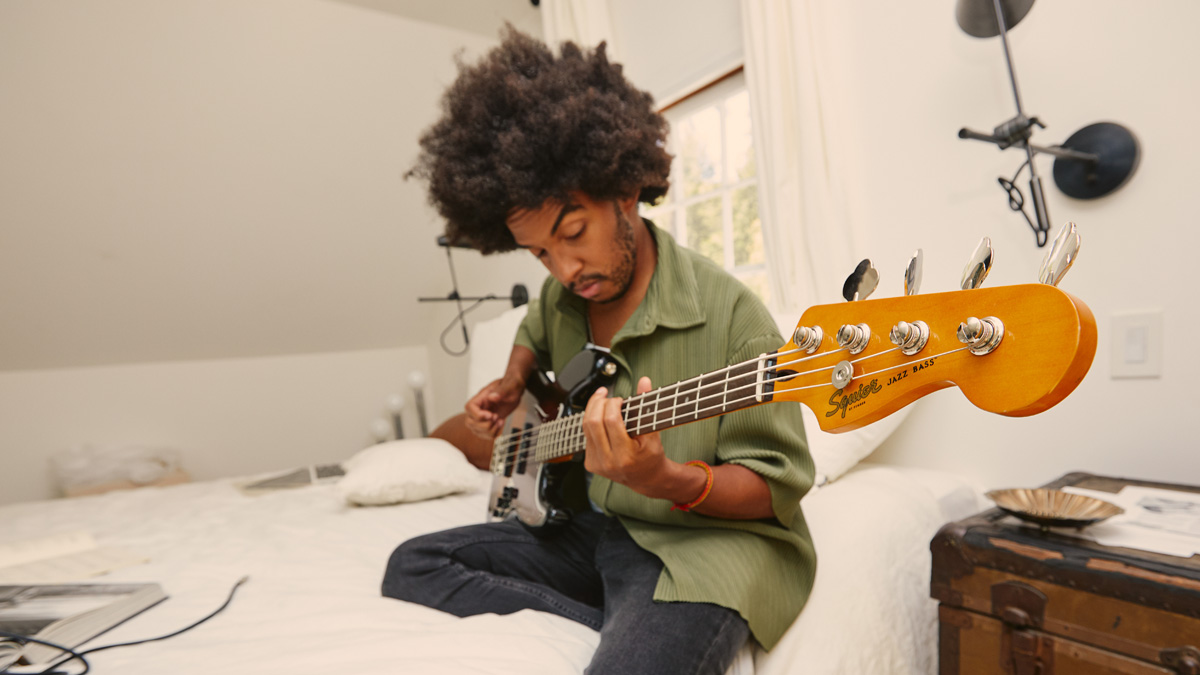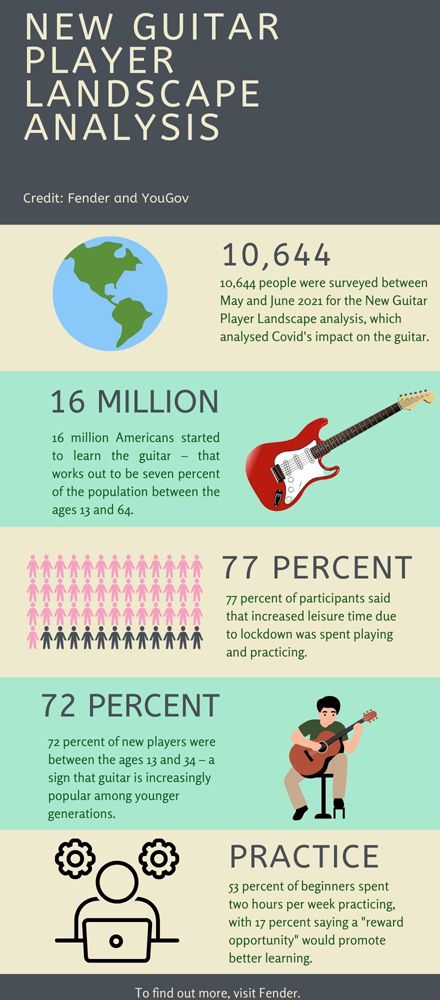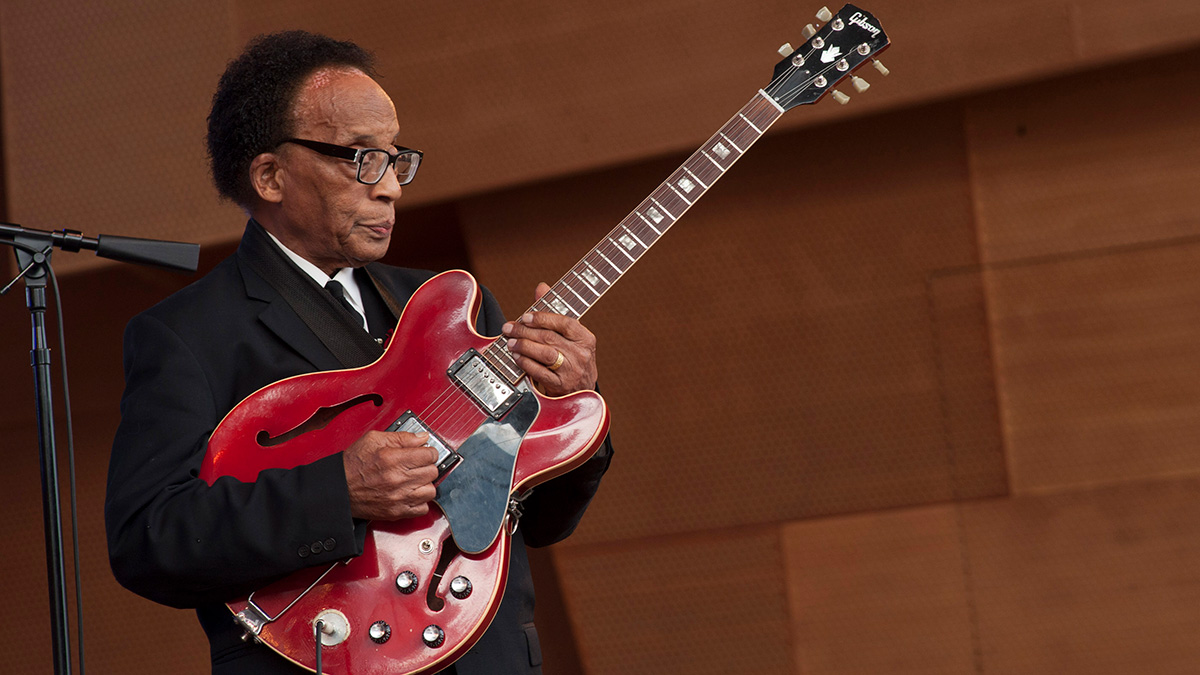
Fender has published the findings from its comprehensive New Guitar Player Landscape Analysis survey, which aims to pick apart the pandemic’s impact on instigating and evolving the emerging culture of guitar.
Strikingly, the study reveals that seven percent of the population in America between the ages of 13 and 64 started to learn the guitar over the past 24 months – a percentage that works out to be approximately 16 million people.
The survey – which Fender conducted following the sudden rise in Fender Play subscribers and increased guitar sales in April 2020 – was commissioned alongside global data and analytics firm YouGov, and included 10,644 individuals from across the country.

Data gathering efforts took place between May and June earlier this year via an online interview, with YouGov weighting the figures in a bid to create a holistic representation of all US guitar players between the ages 13 and 64.
From a macro perspective, 62 percent of those surveyed revealed the Covid pandemic directly influenced their decision to pick up the guitar, with 77 percent of participants reporting that increased leisure time due to lockdown was spent playing and practicing.

The statistics, however, go far beyond merely identifying how many people picked up a six-string for the first time. The findings also revealed that 72 percent of new players were between the age of 13 and 34 – a statistic that points towards the enthusiasm among younger generations to start learning.
This can be somewhat attributed to the ever-evolving, digitally fueled nature of today’s music scene – according to Fender, 58 percent of beginners looked to TikTok for inspiration, with 48 percent consuming weekly online guitar content.
Get The Pick Newsletter
All the latest guitar news, interviews, lessons, reviews, deals and more, direct to your inbox!
Of course, Fender’s statistics are not needed to realize the impact of social media: "Instagram guitarists" have been evolving the guitar scene for quite some time, with players such as Melanie Faye, Horace Bray and Manuel Gardner Fernandes all amassing huge audiences in recent times.
It's a trend Fender has already capitalized on, having recently set up its official TikTok account.
Elsewhere in the study, Fender and YouGov distinguished the motivating factors behind people’s guitar-playing journeys, with 67 percent of new players revealing they had full-time careers and saw the guitar as a hobby rather than a passion.

That percentage is broken down further into identifiable ethnic, age and gender groups, with research showing women, teens, adults over the age of 40 and Black guitar players are all more likely to identify as “self-improvers”.
Further micro observations unearthed by the survey show that 38 percent of the 16 million players identify as Latine, emphasizing the need for a barrier-free guitar-learning experience for all backgrounds.
Practice, practice, practice
Fender’s New Guitar Player Landscape Analysis was also able to unpick emerging attitudes towards practice. 53 percent of beginners spent approximately two hours per week practicing and, on average, believed that four hours a week for one to two years will be adequate to “get good” at the guitar.
As a further point of interest, Fender's survey found that starting the guitar was the hardest part of the process for most, with 17 percent of new players purporting that a reward opportunity would promote better learning.
By studying the results, Fender has voiced its commitment to refining its existing beginner-targeted programs in order to support this 16 million-strong cohort.
The brand’s newly announced Beginner’s Hub – an online network that aims to give beginners everything they need to master their instrument – will be at the forefront of this effort, and will include proprietary resources such as Find Your Fender, Fender Play and Fender Tune.
Of the huge hike in US guitar players, Fender CEO Andy Mooney commented, “The pandemic rapidly accelerated the already healthy growth in beginner guitar players and we accelerated our investment in tools to support them.
“Our suite of Beginner Tools enables new players to enjoy the process of learning to play music they live and perhaps go on to create music we all love.”
To find out more about the methodology, visit YouGov, or head over to Fender to peruse the all-new Beginner’s Hub.


Matt is the GuitarWorld.com News Editor. He has a Masters in the guitar, a degree in history, and has spent the last 16 years playing everything from blues and jazz to indie and pop. When he’s not combining his passion for writing and music during his day job, Matt records for a number of UK-based bands and songwriters as a session musician.










